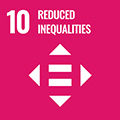- Docente: Francesco Ganzaroli
- Language: Italian
- Teaching Mode: Traditional lectures
- Campus: Bologna
- Corso: Single cycle degree programme (LMCU) in Primary teacher education (cod. 8540)
Course contents
The aim is to get to know the main alternative languages and symbolic systems, augmentative aimed at people with complex communication needs and their partners; they will deepen the techniques of their use in support of inclusion and teaching in classes with students with disabilities. Space will be given to the knowledge and use of assistive technologies for augmentative and alternative communication. For this purpose they will be used during the lessons movies, simulations, group work. Students will have to be available to "dress" the role of a person with communication difficulties, planning, creating and using "poor and creative" tools for communication and inclusive learning. It will also be important to wear the role of the partner communicative awareness, effective and competent, essential tool to favor the assisted and non-assisted relationship. Some topics that will be addressed: 1. The role of the communicative partner 2.Presentation and use of the main symbolic and graphic systems 3. The Bliss language 4. Design and implement Augmentative and Alternative Communication tools (AC) aimed at all students: In-books, personalized books, communication tables 5.The main types of access to the use of tools for the C.A.A. As part of the laboratory experience, the student / student will achieve the following skills: - knows, designs and builds operational tools to achieve the inclusion of subjects with disabilities in formal school learning processes; - is able to observe, understand and evaluate the consequences of communication disabilities with respect to learning, social participation, personal autonomy. - will be able to recognize special communication needs, knowing how to identify the skills of the subjects and the collaborations that can be activated in the contexts, and to build mediators for communication and the relationship of all the children - is able to organize an inclusive class by referring to the methodology and tools of Special Pedagogy, in particular: - mutual help, enhancing the skills of competent communication partners - will be able to evaluate the most effective means and aids for learning for each subject and that do not exclude those with a disability -has basic knowledge and skills for the planning and implementation of augmentative and alternative communication tools for disabled and non-disabled students, in the inclusive school context - Knows and uses the main Symbolic Systems, Graphics and languages used in Augmentative and Alternative Communication.
GENERAL INDICATIONS - Laboratory activities are mandatory. - The laboratory activities are planned and coordinated by the owner of the individual discipline which i laboratories refer. - Only for serious and justified reasons an absence is allowed for 25% of the hours. They are not allowed absence in the laboratories lasting 8 hours (1cfu). Absence even for just one hour entails the obligation for the student to re-examine the entire laboratory. (Resolution CCdL 22 May 2013). - Students who do not attend the first laboratory meeting, to confirm their own presence to the conductor, will be automatically excluded from the laboratory itself. - Those who believe they cannot be present at the first laboratory meeting are required to register (before the lists close). This in order to: - leave the place free to other students; - have the possibility to enroll in another laboratory (simultaneous enrollment to more than one is forbidden) laboratory). - The evaluation of the laboratory activity is one of the elements of which the teacher is a teacher takes into account the overall evaluation of the teaching; the certification of the final vote takes place at the same time as the teaching examination test and is the responsibility of the teaching professor. The modality of relationship between the final evaluation, carried out by the holder of the teaching, and that relative to the individual laboratories, carried out instead by the laboratories themselves, are determined for each student by the teaching holder. - It is desirable for students to take the final laboratory test before taking the exam relative teaching. - Each laboratory CFU is divided into 8 hours of activity in presence (or however structured by the tenant) and 17 hours of individual study.
Readings/Bibliography
An annotated bibliography will be provided during the lessons, as well as articles on specific topics dealt with. The bibliography will be enriched from time to time also thanks to the contribution of the participants in the Laboratory. Articles will be provided for further study in the individual study.
Teaching methods
The laboratory is developed through an active and participatory methodology: the laboratory activity includes both practical tests evaluated by the teacher during the meetings, and tests / papers to be presented or delivered to the teacher at the end of the meetings. In particular, we will work as a small group to produce accessible and inclusive educational material.
Assessment methods
Each laboratory, in addition to an active participation, provides for the development of a laboratory product defined by the teacher and taking into account the fact that each laboratory provides 17 hours of autonomous work for every 8 hours of attendance.
The evaluation of each laboratory, regardless of the duration, includes four judgments:
• REJECTED: laboratory to be re-performed;
• -1;
• 0;
• +1.
The evaluation will be made known by the tenants through Almaesami and will contribute, considering the average grade of the different teaching modules, to define the final grade of the exam. This evaluation will remain valid until the vote is recorded
Teaching tools
Lessons take place in a classroom equipped with a Multimedia Interactive Blackboard and video projector. Sample videos will be viewed. Starting from the second meeting it is preferable that the participants are equipped with their own computer and / or tablet.
Office hours
See the website of Francesco Ganzaroli
SDGs


This teaching activity contributes to the achievement of the Sustainable Development Goals of the UN 2030 Agenda.
